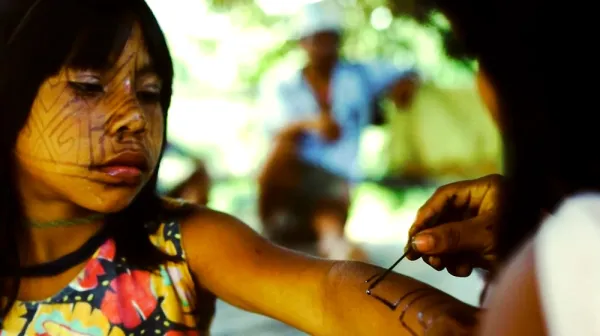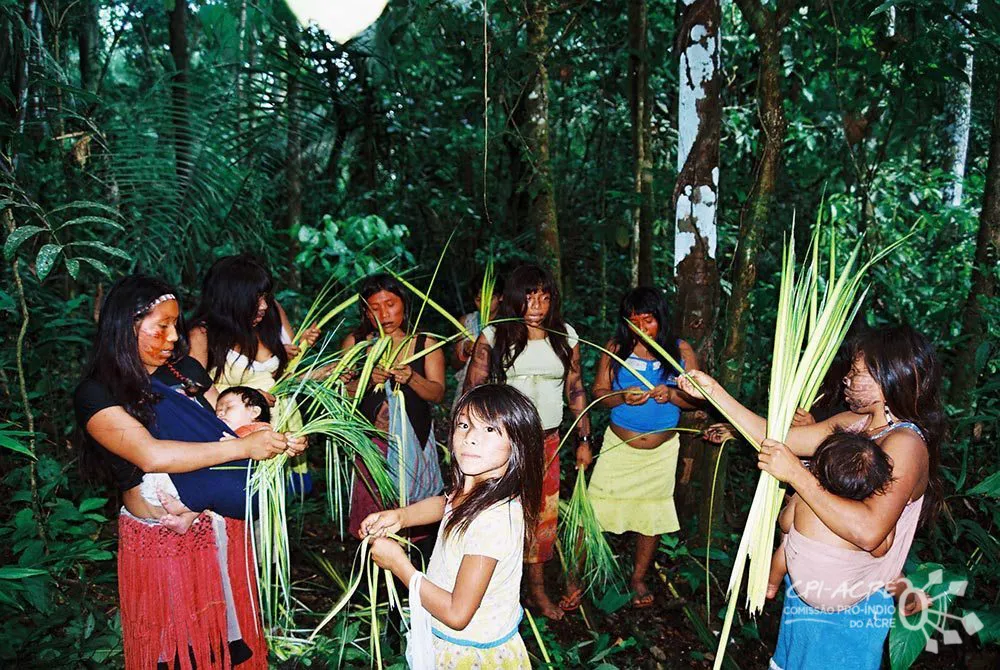Brazil considers making Huni Kuĩ People’s graphics a cultural heritage
25 de January de 2025

By Ana Pastana – From Cenarium
MANAUS (AM) – The National Institute of Historical and Artistic Heritage (Iphan), under the Ministry of Culture (MinC), announced on the 22nd, via the Official Gazette, that the proposal to register the graphics of the Huni Kuĩ (Kaxinawa) indigenous people, known as Kene Kuĩ, as a Cultural Heritage of Brazil is underway. Iphan has opened a 30-day public consultation for society to provide input on the request for registration of this cultural asset.
The request was made through a document signed by 127 representatives of communities and indigenous organizations of the Huni Kuĩ people in 2006. According to the Ministry, the Huni Kuĩ people originate from the Western Amazon, near the border between Brazil and Peru. Currently, indigenous groups of this ethnicity inhabit the state of Acre and the southern region of Amazonas.
The goal of recognizing Kene Kuĩ as Cultural Heritage is to protect and value the ancestral knowledge of the Huni Kuĩ people, which, according to the announcement, is under threat. “The Huni Kuĩ face challenges in preserving Kene Kuĩ, such as the disinterest of younger generations, the decline in cultivating native cotton for weaving, and the improper appropriation of their graphics by non-indigenous people. Recognizing Kene as Brazil’s Cultural Heritage seeks not only to protect this heritage but also to value the holders of this knowledge and promote safeguarding actions to ensure its historical and cultural continuity,” the publication explained.

Kene Kuĩ
Kene Kuĩ is considered a visual language encompassing a set of ancestral knowledge involving techniques, rituals, and both tangible and intangible materials, used to create graphic patterns by the Huni Kuĩ people. In addition to the graphics, their creations also include weaving, basketry, body painting, ceramics, hammock production, beadwork, and more.
“The Kene graphics possess a distinctive stylistic unity, marked by an aesthetic balance between symmetry and asymmetry, figure and background, using elaborate geometric patterns that narrate stories and reflect a rich and complex cosmology. Traditionally, the creation of Kene is predominantly carried out by women, who hold the role of ‘aĩbu keneya’ (masters of drawing), transmitting knowledge through oral practices, songs, and rituals. Learning Kene also involves observation and a connection with the ‘yuxibu’ (forest spirits), who inspire and guide the graphic creations,” states the publication.

CPI-Acre
The audiovisual series “Tecendo Memórias” (Weaving Memories), supported by the Comissão Pró-Indígenas do Acre (CPI-Acre), a non-profit organization founded in 1979 and directed by Acrean professor and indigenous advocate Dedê Maia, showcases how the Kene Kuĩ graphics are created by the Huni Kuĩ people. Watch it below:
Huni Kuĩ
According to CPI-Acre, Huni Kuῖ means “the people themselves, it is us.” Huni denotes “man” or “people,” while kuῖ means “the same, the true.” The term Kaxinawa emerged during intergroup contact. “Our relatives have this habit of identifying others by their clothing, food, culture, or language, and they gave us the name Kaxinawa. Kaxi means bat, and nawa means people,” explains Dr. Joaquim Paulo Adelino Kawinawá, a linguist and Huni Kuĩ professor.
Currently, according to the organization, the Huni Kuĩ population is estimated at around 14,000 people, spread across five regions and 12 Indigenous Territories (ITs), based on 2019 data from the Huni Kuĩ Federation of Acre State (Fephac). In addition to Brazil, there are also Huni Kuĩ indigenous people in Peru, with a population of approximately 2,419 individuals.


